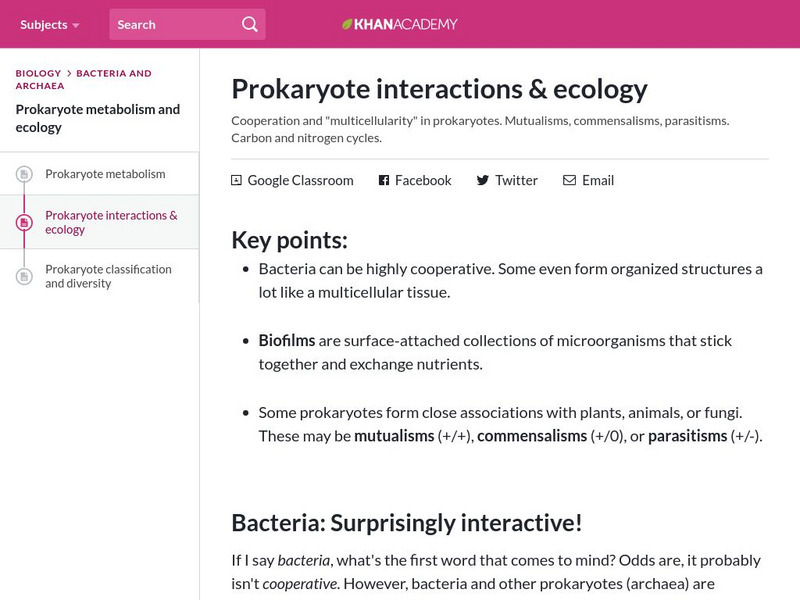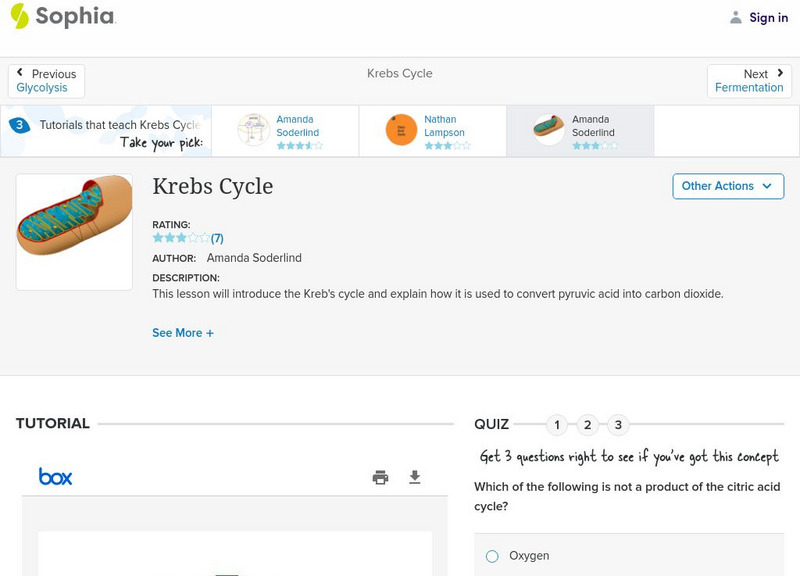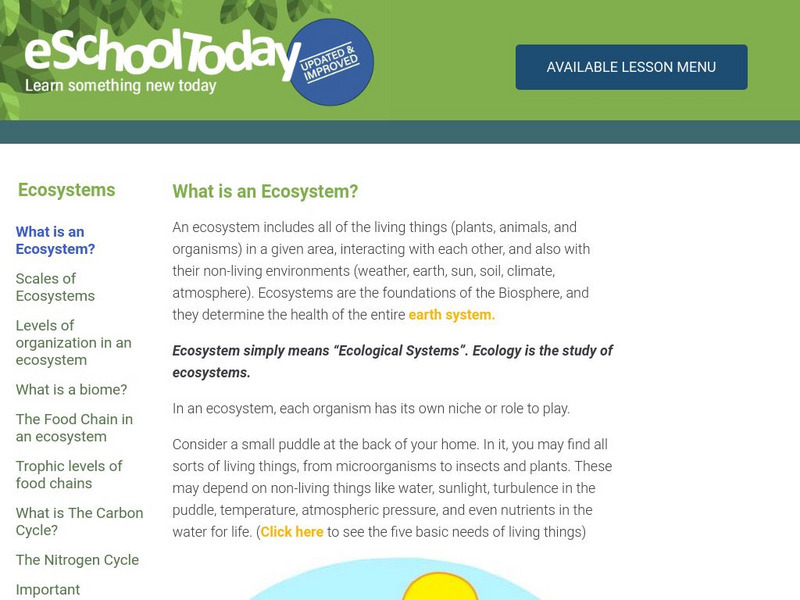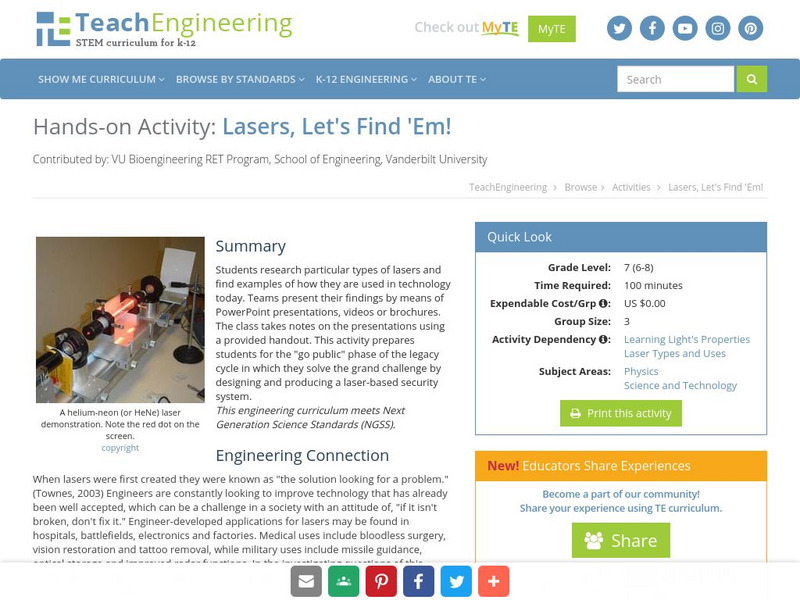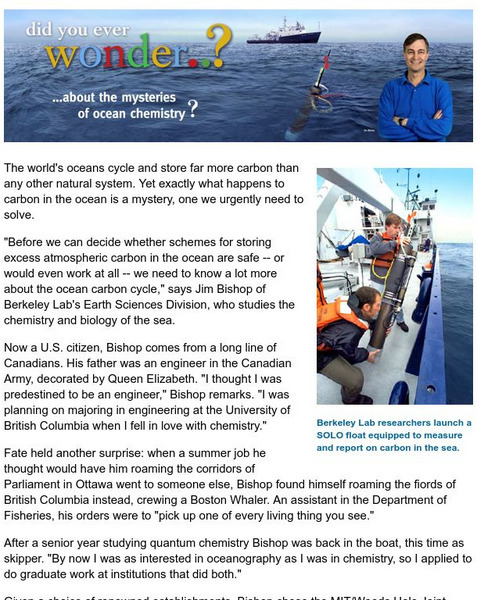Hi, what do you want to do?
Climate Literacy
Clean: Mt. Pinatubo and the Atmosphere
This lesson explores the impact of volcanic eruptions on the atmosphere. Students will analyze three types of visual information: a graph of aerosol optical depth v. global temperature, a global map with temperature anomalies, and an ash...
Science Museum, London
Science Museum: Climate Science Info Zone
Media-rich interactive explores Earth's climate, investigating what might be causing the climate to change and how to prepare for it in the future.
Ducksters
Ducksters: Science for Kids: Oxygen Cycle
Kids learn about the oxygen cycle and how this nutrient travels through the ecosystem to sustain life on Earth.
ClassFlow
Class Flow: Life as a Carbon Atom
[Free Registration/Login Required] In this lesson students pretend to live the life cycle as a Carbon Atom.
University Corporation for Atmospheric Research
Ucar: Cycles of the Earth System: Carbon Dioxide Sources and Sinks
Young scholars will use a chemical indicator (BTB) to detect the presence of carbon dioxide.
Other
The Geological Society: Climate Change: Evidence From the Geological Record
In this statement, The Geological Society describes the changes that are happening to the global climate in terms of what evidence has been observed in our geological history. For example, what happened during past events of rapid...
Curated OER
Science Kids: Science Images: Carbon Cycle Diagram
This carbon cycle diagram shows how carbon moves from one part of the Earth to another. Measured in gigatons, the storage and annual exchange involves oceans, vegetation, soil, fossil fuels, the atmosphere and more. For more information...
University Corporation for Atmospheric Research
Ucar: Climate Discovery Teacher's Guide: Investigating Climate Present
Lesson plans on the following: Carbon cycle: Carbon Dioxide Sources and Sinks, Nitrogen Cycle: Traveling Nitrogen, Ocean and Atmosphere: Make Convection Currents, Energy Cycle: Albedo
TeachEngineering
Teach Engineering: Moebius Strips
In this activity, students make Moebius strips and use them to demonstrate the interconnectedness of an environment. They will explore the natural cycles (water, oxygen/carbon dioxide, carbon, nitrogen) within the environment.
Khan Academy
Khan Academy: Prokaryote Interactions & Ecology
Learn about cooperation and "multicellularity" in prokaryotes including mutualisms, commensalisms, parasitisms. Also find out the role of prokaryotes in the carbon and nitrogen cycles.
Sophia Learning
Sophia: Krebs Cycle: Lesson 2
This lesson will introduce the Kreb's cycle and explain how it is used to convert pyruvic acid into carbon dioxide. It is 2 of 6 in the series titled "Krebs Cycle."
Sophia Learning
Sophia: Krebs Cycle: Lesson 3
This lesson will introduce the Kreb's cycle and explain how it is used to convert pyruvic acid into carbon dioxide. It is 3 of 6 in the series titled "Krebs Cycle."
Sophia Learning
Sophia: Krebs Cycle: Lesson 1
This lesson will introduce the Kreb's cycle and explain how it is used to convert pyruvic acid into carbon dioxide. It is 1 of 6 in the series titled "Krebs Cycle."
eSchool Today
E School Today: What Is an Ecosystem?
Learn about all the different levels of ecosystems, from the living things under a rock, up to a rainforest biome. Explains the levels of organization within an ecosystem, the different types of biomes, food chains and trophic levels,...
Other
Koshland Science Museum: Earth Lab: Degrees of Change
This resource provides information on all of the aspects of global warming, climate change, and the future of the earth.
Other
S Cool: Engery Flow and Nutrient Cycle
This website describes trophic levels, transfer of energy between trophic levels, pyramids of ecology, and nutrient cycles within the environment.
Khan Academy
Khan Academy: Photorespiration
Photorespiration is a wasteful pathway that competes with the Calvin cycle. Explore why photorespiration happens, when it's most likely to take place, and how it actually works.
TeachEngineering
Teach Engineering: Lasers, Let's Find 'Em!
Students research particular types of lasers and find examples of how they are used in technology today. Teams present their findings by means of PowerPoint presentations, videos or brochures. The class takes notes on the presentations...
Other
The Incalculable Importance of Plankton
Plankton is a passively swimming plant life in a body of water known as the ocean. The Plankton that live in our ocean have one of the most important roles in the our Carbon Ecosystem. The importance of Plankton in our Ecosystem is...
Geography 4 kids
Geography4 kids.com: Bgc Cycles: Oxygen Cycle
Discover the process by which oxygen cycles through the ecosystem.
Lawrence Berkeley National Laboratory
Berkeley Lab: Did You Ever Wonder? About the Mysteries of Ocean Chemistry?
Students investigate ocean chemistry. The article discusses Jim Bishop, ocean cycle, the biology of the sea, and carbon in the sea. The resource consists of pictures, quotes, and links to additional resources.
TeachEngineering
Teach Engineering: Go With the Energy Flow
Students learn about energy and nutrient flow in various biosphere climates and environments. They learn about herbivores, carnivores, omnivores, food chains and food webs, seeing the interdependence between producers, consumers and...
PBS
Pbs Teachers: Earth's Warming Climate: Are We Responsible?
We obviously don't want to feel responsible for the warming climate, but are we? In this lesson plan you will analyze CO2 data sets and study barriers involved in teaching about global climate change. PBS TeacherLine also provides a...
NASA
Nasa: Oceanography
Join NASA in its study of oceanography and learn about the Earth system, the physical ocean, and life in the ocean. Try out the Giovanni: Earth Data Visualization Tool and access satellite-derived data to enhance the learning experience.
Other popular searches
- Biology the Carbon Cycle
- Science: The Carbon Cycle
- Science the Carbon Cycle
- The Carbon Cycle Worksheet











